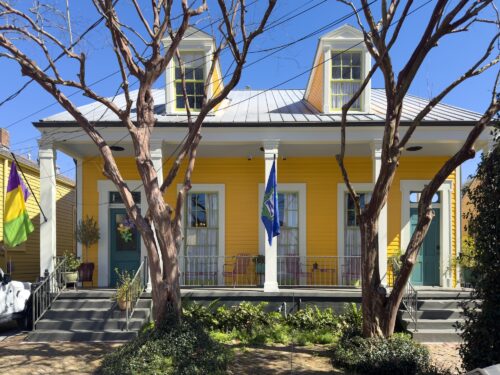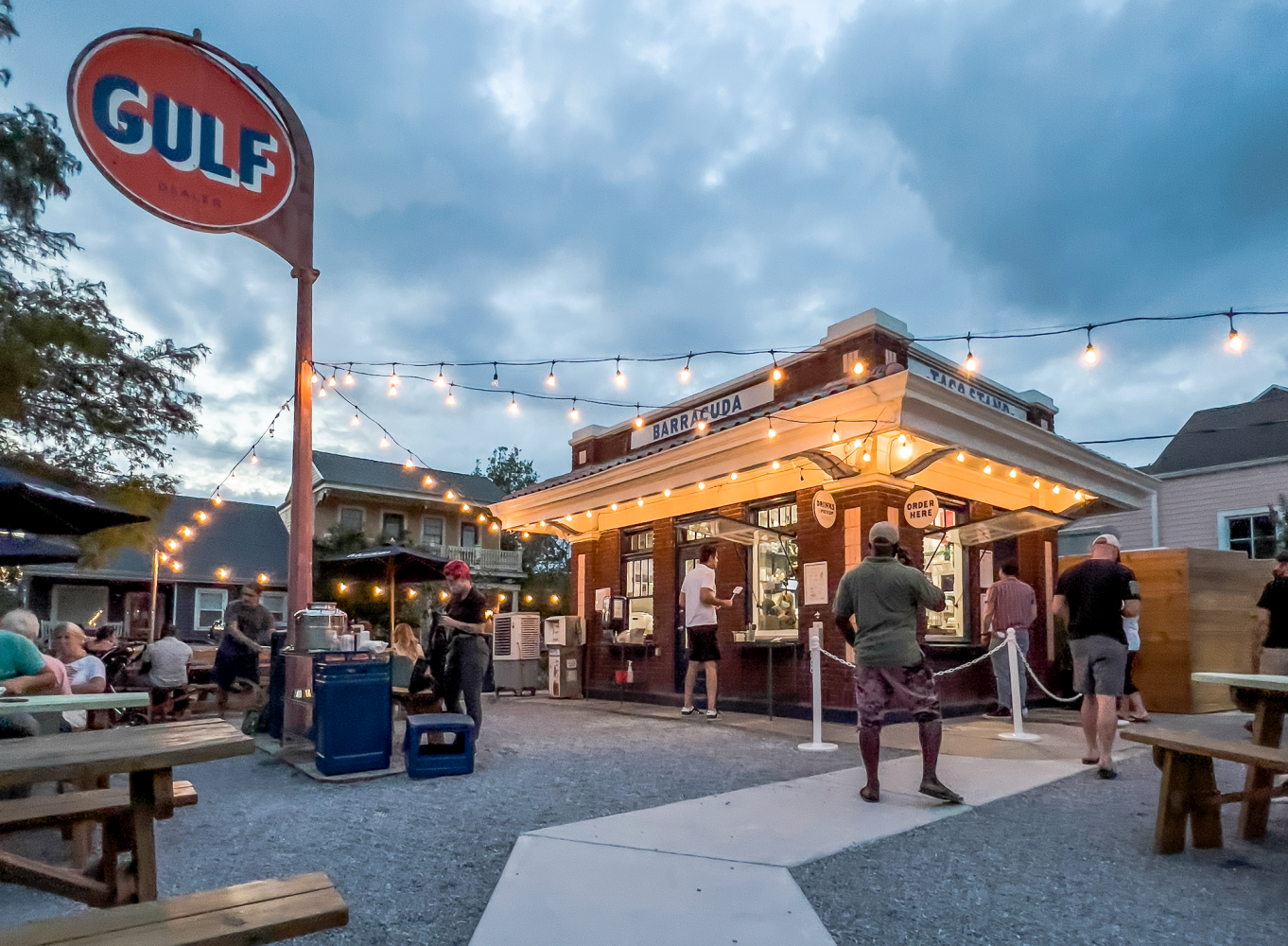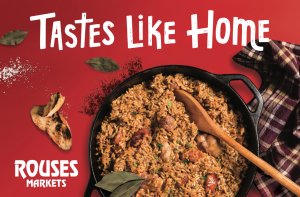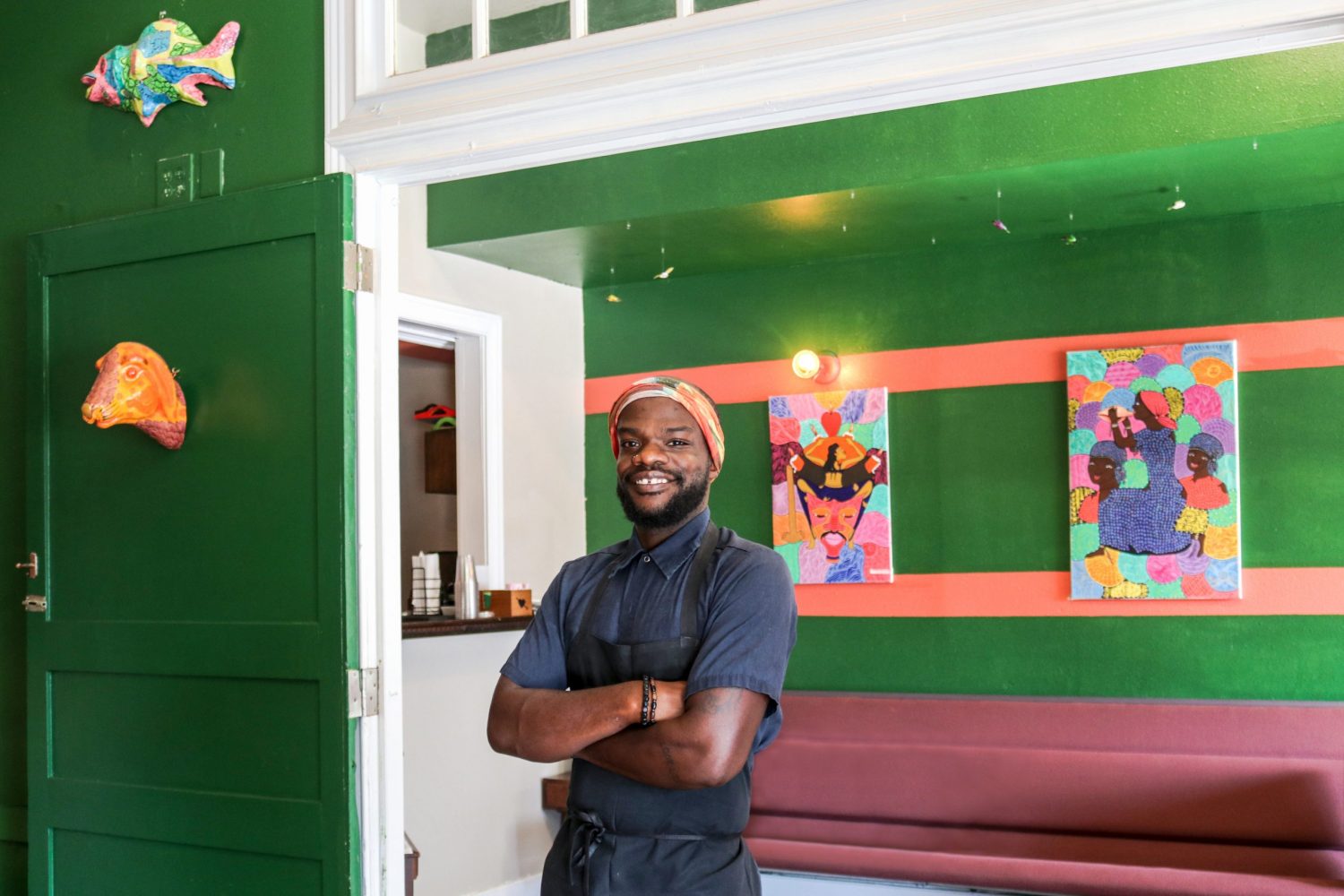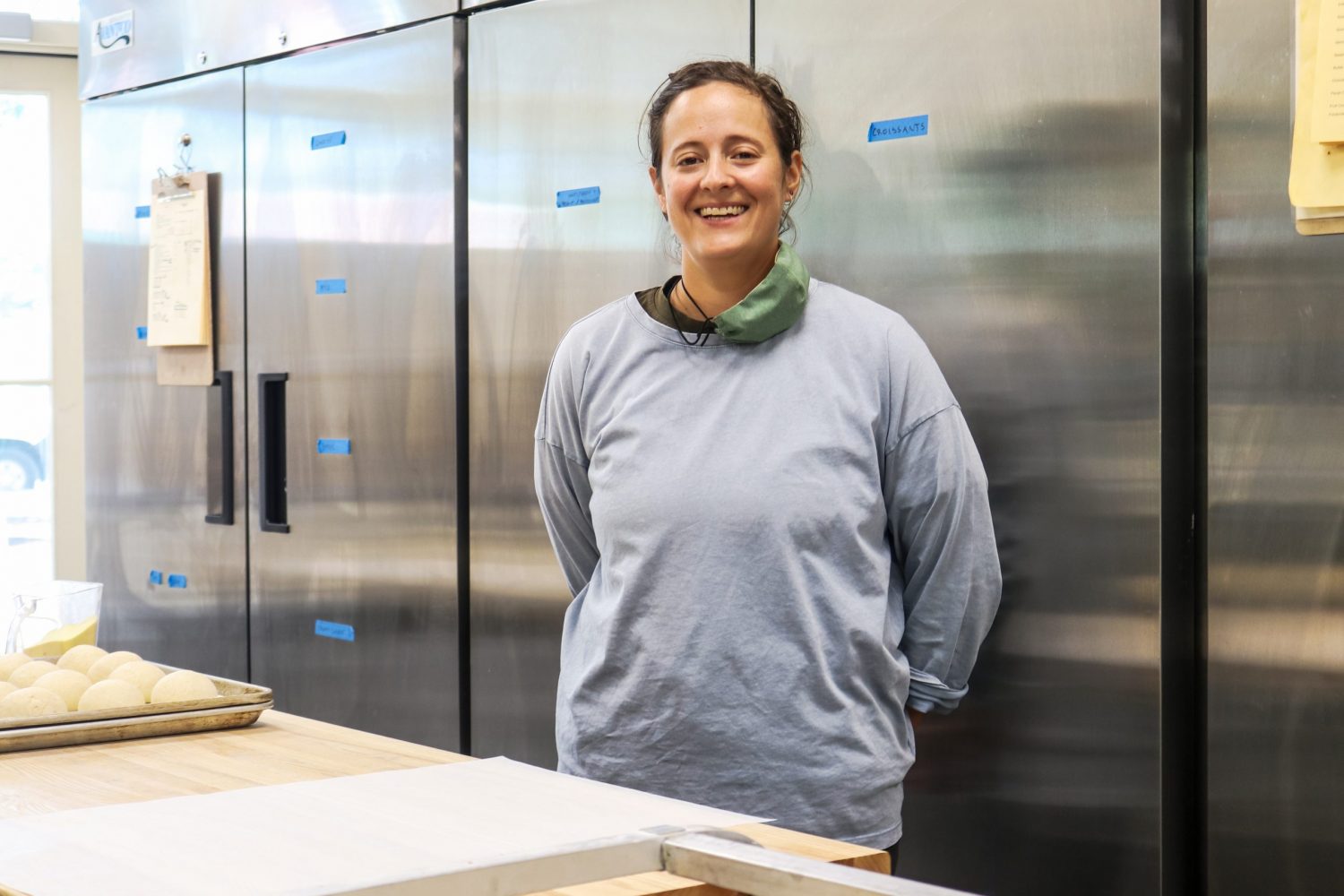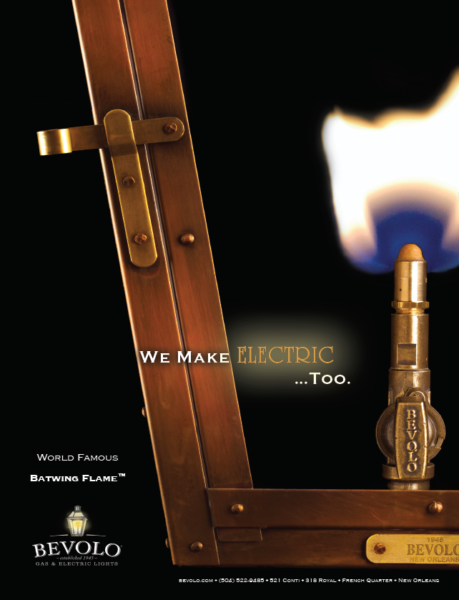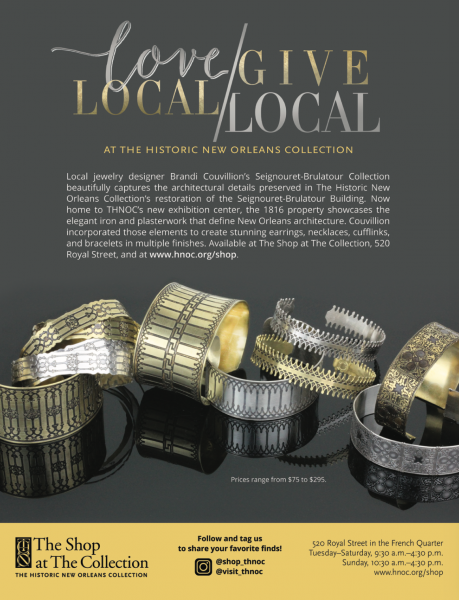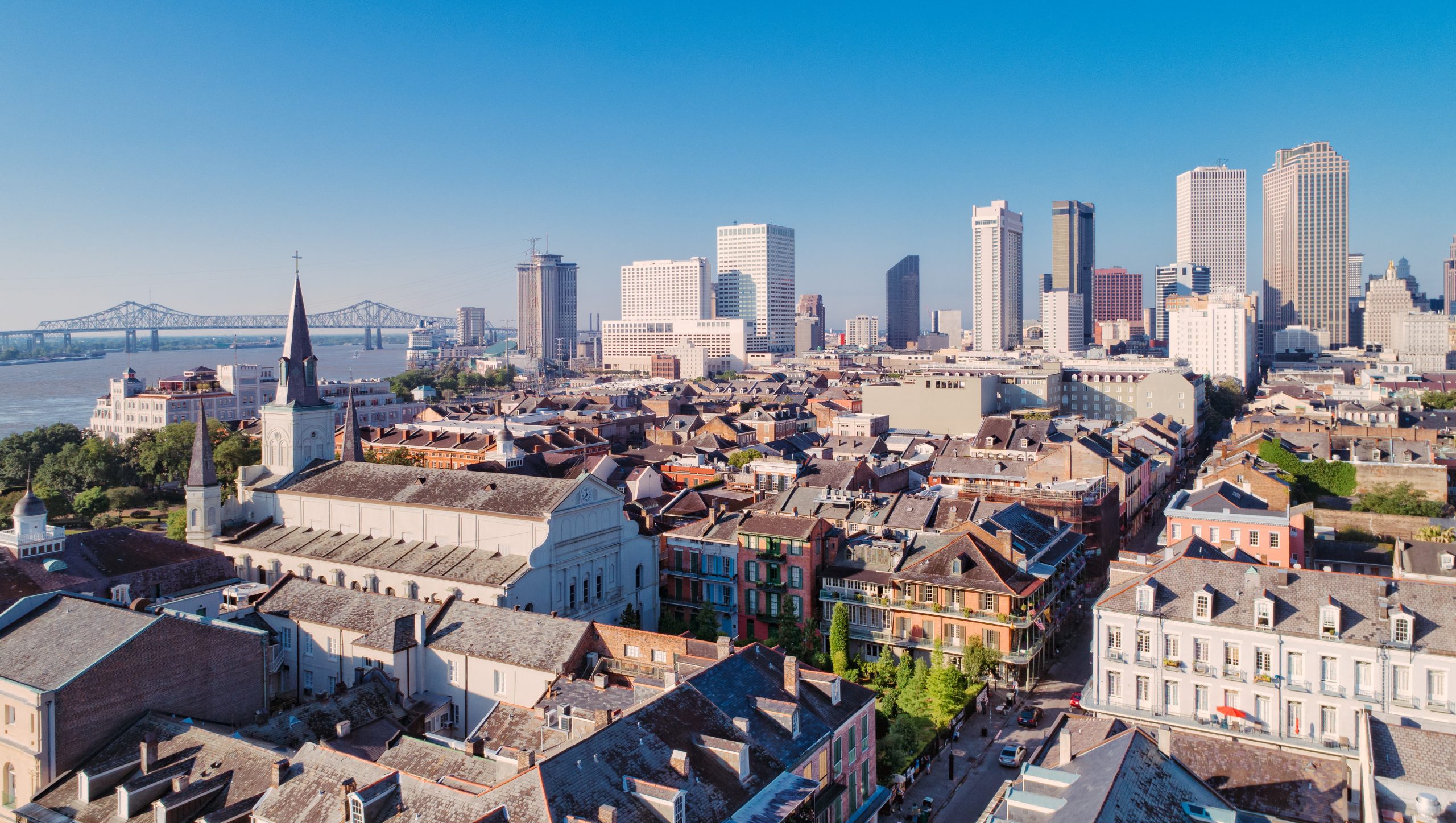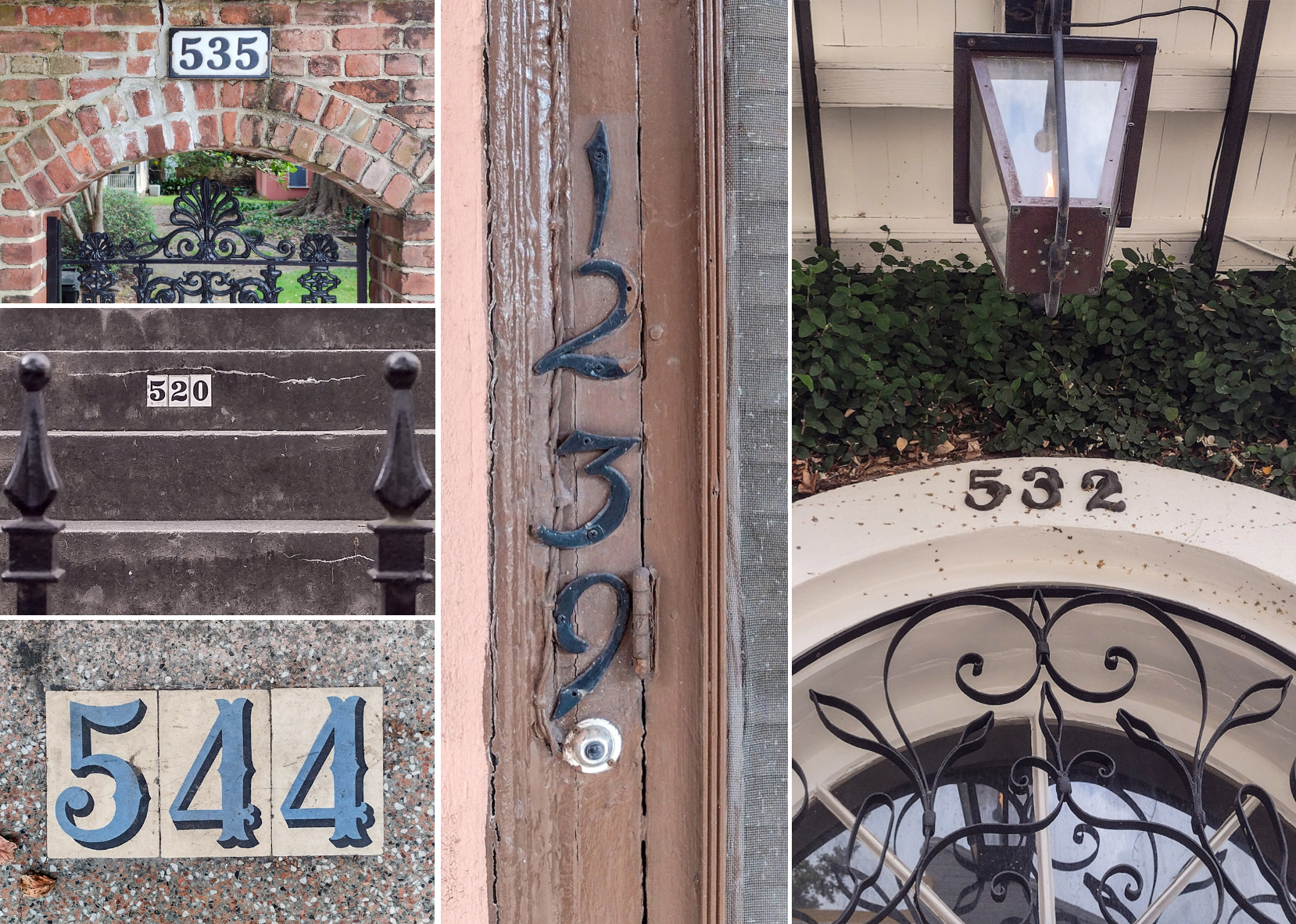This story appeared in the November issue of PRC’s Preservation in Print magazine. Interested in getting more preservation stories like this delivered to your door nine times a year? Become a member of the PRC for a subscription!
Major hurricanes, a pandemic, supply-chain shortages and rising inflation. It’s hard to conceive of more difficult times for the New Orleans hospitality industry. It’s no wonder that 2020 and 2021 have seen the shuttering of some longtime neighborhood restaurants. But along with those closures, remarkably, other restaurants and small businesses have managed to rise like a phoenix from the hurricane debris and pandemic precautions.
The optimism and ambition of local restaurateurs and business owners have brought new concepts and opportunities to the table. And New Orleanians’ love affair with food, a willingness to support our neighbors, and a yearning for an eventual return to “normal” have helped propel many of these new eateries to success — even with the pandemic-related obstacles.
While new restaurants are popping up across the city, it’s clear that historic buildings and locations remain a popular draw for restauranteurs. From Algiers Point to the Bywater, Bayou St. John to the downtown riverfront, many of the city’s newest eateries are choosing to showcase their menus against a backdrop of the city’s oldest architecture. Here’s a look at some new eateries in historic places that have opened throughout the pandemic — or are opening soon.
Have a new neighborhood favorite that isn’t on this list? Tag us in your photos on social media (@prcnola on Instagram, @prcno on Facebook and Twitter) and let us know.
Advertisement
 Barracuda
Barracuda
446 Pelican Ave.
This historic gas station in Algiers Point is now home to popular taco and margarita stand Barracuda. It’s the second location of chef/owner Brett Jones’ taco restaurant, after the first location opened on Tchoupitoulas Street two years ago.
The early gas station was built in 1930 and was the longest continuously operated service station in the South until it closed in 1990. The building has the appearance of many other early-20th-century gas stations built across America during the rise of the country’s burgeoning car culture. The postage-stamp-sized building has a decorative brick facade with a tile roof that wraps around the perimeter. Its signature signage — a blue and white GULF logo on an orange circle — is still perched at the top of a curved metal signpost in front, hinting at the building’s previous life.
The building shines after a renovation, and its new setup for walk-up orders and ample outdoor seating is perfectly suited for pandemic dining. On a nice day, neighbors can order at the walk-up window and take advantage of the many picnic tables spaced throughout the yard beneath rows of umbrellas and festive string lights. Its menu includes a variety of tacos served on fresh tortillas made in house, bowls, chips (with queso, guacamole and fresh salsas), cocktails and more.
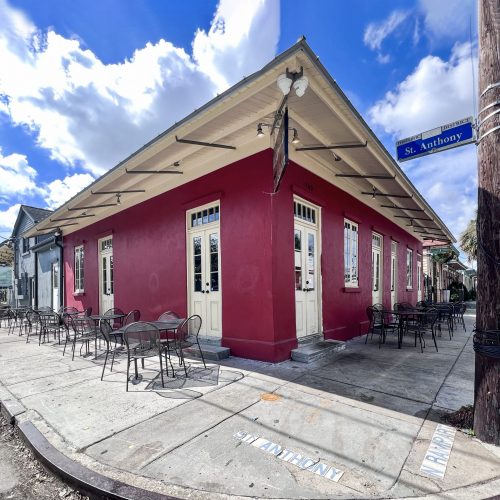 Budsi’s Authentic Thai
Budsi’s Authentic Thai
1760 N. Rampart St.
After several years running a successful pop-up at Pal’s Lounge in Mid-City, chef Budsaba Mason and husband Jared Mason opened their brick-and-mortar location in the Marigny Triangle at the end of 2020.
The building is a historic Creole cottage that was altered in the mid-20th century and used as a church. After the church’s closure, a recent renovation restored the cottage’s original appearance complete with French doors and an abat-vent wrapping around the building that cantilevers over outdoor seating. From the inside, the building has a large, open feel with exposed rafters. The walls’ briquette-entre-poteaux construction — a technique used on early Creole cottages — is also visible, showing the building’s age.
The kitchen serves dishes from the Isan region of northern Thailand where Budsaba Mason grew up, according to an article in the Gambit, including specialties like waterfall pork, larb and a spicy somtam papaya salad. Mason also puts a personal spin on southern Thai dishes and street food classics, including curries, noodle dishes, pad thai and more. The bar serves up specialty cocktails with inventive new twists on classics — like gin and tonics infused with lemongrass, “Budsiritas” and Jackfruit gimlets, plus familiar favorites.
Advertisement
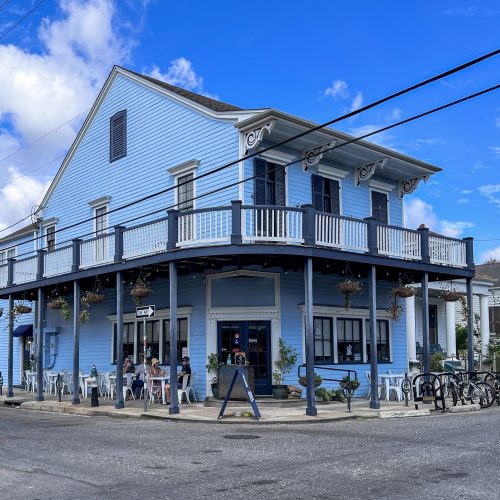 Alma
Alma
800 Louisa St.
Chef Melissa Araujo opened Alma in the fall of 2020, bringing modern Honduran flavors to the corner of Louisa and Dauphine streets in the Bywater neighborhood.
The historic building is a 19th-century Creole storehouse with a chamfered corner entrance on the first floor and a gallery wrapping around both sides of the building. Italianate-style brackets adorn a wide overhang on the second story. The structure was likely built prior to 1896, when it appears on Sanborn Fire Insurance maps labeled as a drugstore. Newspaper advertisements from the same year list a “Von Gohren’s Pharmacy” at the same site. More recently, the building was formerly home to Paloma Cafe, owned by Birmingham-based Revelator Coffee Co. Paloma closed its doors at the end of 2019.
Araujo worked in several high-end New Orleans restaurants and launched Alma through pop-ups prior to opening the brick-and-mortar location in 2020. The restaurant pays homage to Araujo’s Honduran heritage with a breakfast and lunch menu that boasts traditional Honduran eats with a modern spin. “We pay tribute to our grandmother’s cooking with hearty dishes like Arroz con Pollo and Chicharron con Yuca,” Alma’s website says. “Alma has its roots deeply entrenched into Honduran tradition and celebrating Honduran culture, food and music.”
The eatery also has a coffee and tea menu, aguas frescas, and a happy hour with cocktails that highlight Latin American flavors.
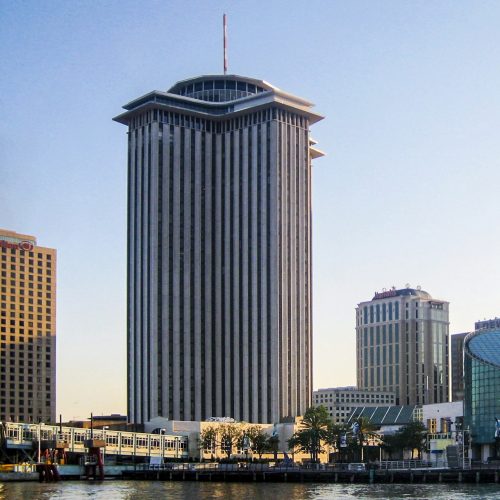 Four Seasons Hotel New Orleans
Four Seasons Hotel New Orleans
2 Canal St.
The Four Seasons opened its doors this summer to much fanfare inside the 33-story former World Trade Center building at the end of Canal Street.
The New Formalist-style tower was designed by architect Edward Durell Stone and built in 1967. The building was vacated in 2010, and the Preservation Resource Center and its allies advocated for reuse instead of demolition of the 670,760-square-foot structure. The tower is individually listed on the National Register of Historic Places, and its recent adaptive reuse — powered by historic rehabilitation tax credits — was designed by Cambridge Seven Associates, Woodward Design + Build and Trapolin Peer Architects.
The new hotel has several new dining and drinking establishments open to visitors and locals. The centerpiece of the restored modernist lobby — clad in original Italian marble panels — is the Chandelier Bar, which gives guests a dazzling welcome beneath a suspended glass light fixture evocative of the Space Age. In addition to cocktails, the bar features shareable plates by Chef Alon Shaya. Shaya also is the chef behind Miss River, a restaurant that has opened on the hotel’s first floor. Its website calls the restaurant Chef Shaya’s “love letter to Louisiana,” highlighting local ingredients and bold flavors. Chemin à la Mer, a new restaurant from Chef Donald Link, also is scheduled to open soon on the building’s fifth floor. That restaurant will have sweeping views of the Mississippi River and a menu with French and Louisiana flavors, steaks and an oyster bar.
Advertisement
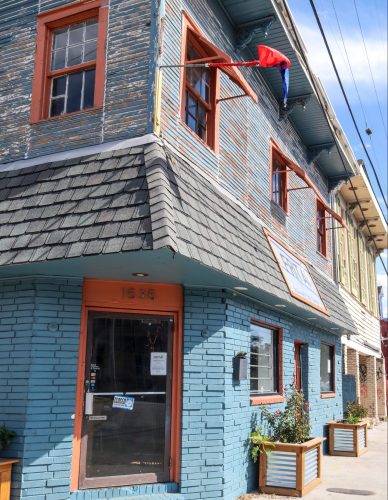 Fritai
Fritai
1535 Basin St.
In the early 19th century, thousands of Haitian Creoles immigrated to New Orleans after the Haitian revolution and left their mark on the city’s culture, architecture and cuisine. Today in Tremé — the same Faubourg where many of the city’s 19th-century Haitian Creoles settled — chef Charly Pierre’s new Haitian restaurant Fritai is a celebration of New Orleans’ ties to the island nation.
Pierre is Haitian American and moved to New Orleans from Boston six years ago, working at several local restaurants before opening Fritai at St. Roch Market in 2016 with business partner Minerva Chereches. After gaining popularity in St. Roch, Pierre opened the new brick-and-mortar location on Basin Street in May earlier this year.
The building, formerly Chef D’z, is a corner storehouse. From outside, the first floor reflects mid-20th-century alterations with a patterned brick veneer and a secondary roof, but the form of the chamfered corner shows its original corner store form. The second story hints at the building’s earlier construction date, with wood windows, clapboard siding and Italianate brackets adorning an overhang. The two-story building appears on Sanborn Fire Insurance map records sometime between 1908 and 1940. Inside the restaurant on the first floor, fluted cast-iron columns and a mosaic floor made from broken ceramic tiles accent colorfully painted walls and Haitian art.
Fritai’s menu is filled with Haitian flavor with specialties like crispy Griyo (fried pork), whole roasted fish and Creole chicken. Some Haitian classics are given a Louisiana twist — the traditional Espageti has the addition of local andouille sausage. Other dishes are new creations by Chef Pierre, like the Fritai sandwich, which has crispy pork, avocado, mango sauce and spicy pickliz relish sandwiched between two fried plantains. The bar features a wide variety of tropical cocktails to complement the Haitian cuisine.
Q&A with Charly Pierre, Chef and co-owner, Fritai
When did you open this location?
This location was opened in May 2021. We closed (our stall in St. Roch Market) in February, and we had that for almost five years.
What inspired you to open a new business despite the challenges of the pandemic?
I wanted to make more of a profit. It’s very difficult to make a profit in a space like a little food stall compared to a restaurant with a full bar. That was my biggest endeavor and goal.
We saw the pandemic as an opportunity to grow. The pandemic did two things: it kind of demolished the restaurant business, but also there were a lot of grants, PPPs (federal Paycheck Protection Program) and different types of loans, and different ways that you could tap into certain funds. If you were proactive about it, you could find ways to keep yourself afloat, and we did so enough to open our own business. We already had a little capital, so we just built that with grants, and here we are.
My employees are super important to me. I always make sure that who I hire, why I hire them, and how I treat them is extremely important just to be a model for the rest of the city. The unemployment rates are so high for people of color in this city, and for trans people, so BIPOC (Black, Indigenous, People of Color), we like to focus on and making sure that they have jobs.
Tell us a little bit about your building and the renovations that went into creating your new restaurant.
The building itself has been in the (Green) family for about 50 years, and it was so many different spaces. Most of the time, it was a restaurant, and at one point, it was a boarding house upstairs and a restaurant downstairs. When we moved into the space, it was fairly built out. It had the guts, but we just had to do some major remodeling to the bar, some painting, and reworking the kitchen area as well. The space itself has kind of been what it is. The frame of it hasn’t really changed, even the inside space, because it was always some type of dining area. There’s a little room off to the side that was a barber shop at one point as well. But it has always stayed some type of refuge to eat.
Tremé has a rich Haitian history, with many of its early 19th-century settlers being Haitian immigrants. What is it like to bring a new Haitian restaurant to this historic neighborhood?
Especially being Black and Haitian, spiritually it just feels good to be here. This neighborhood has been very welcoming. A lot of people know Nancy Green, my landlord, and they really love her. So I’m happy I can just keep that going and have a great relationship with her as well.
What’s on the menu at Fritai?
We’re really notable for our Fritai, which is a sandwich between plantains instead of bread. We do that with avocado, roasted pork, spicy mango sauce and a spicy relish called pikliz. Pikliz is a Haitian condiment that’s on most dishes; it’s cabbage, carrots, hot peppers, citrus, all marinated together. We put that for a slaw right on top, and then we top it off with another plantain.
That’s one of our most notable things, but we do so many things: whole fishes, crab mac and cheese, right now we’re doing oxtails. There’s a lot of stuff, but we’re ever-changing. Our menu is always evolving, and that’s what I really love about being here at Fritai and our new space. I’m able to really get to play around with the menu. So that really brings me and my team joy.
In addition to pandemic-related challenges, New Orleans has been recovering from Hurricane Ida. What impact did it have on your business?
I was impacted the way that the whole city was impacted. Luckily, we got our roof done a week before the storm came, so that was stable. My business, in the area that we’re in, is pretty flood prone, but they had just put in some permeable pavement in my area, so we got lucky with that again. But I gave away all my food, and what I couldn’t give away, I lost — thousands of dollars’ worth of product, and then being out of business for two weeks.
The bounce back is really difficult, and that’s why I know so many people who have the means to open back up, but they are just feeling exhausted. I’ve been in the business here for six years, and I completely understand that exhaustion in many ways. You have to get with the punches here, and a lot of times the punches are like knockouts, and you’ve got to get back up. It’s difficult, but we’re the city that finds a way to survive because we have to. I’ve got people, I’ve got employees, I’ve got rent, and I’ve got things I got to do — so I’ve got to keep cooking.
How can people support local businesses like yours while the city recovers?
The simplest way is to just go to them. We have to focus on the small guys, because the big guys are going to have money for longevity, but these small businesses right now, they’re the ones who need the support more than anybody because their funds are limited. A little support goes a long way, and a good review goes a long way. So physically go to these businesses, bring your parties to them, think about catering and things like that.
A lot of people like to stop for fast food, but if you pre-plan your meals just a couple minutes more, you can order some food at a restaurant and pick it up. Just start thinking more about the small guys. There shouldn’t just be a small business day or a small business month, every day should be small business day.
Fritai is open Wednesday to Monday, 4 to 10 p.m. Closed on Tuesday.
Advertisement
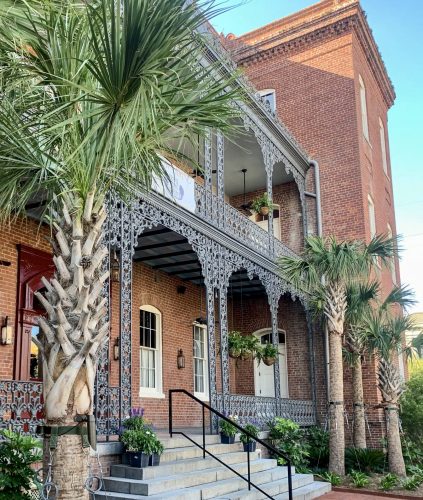 Hotel St. Vincent
Hotel St. Vincent
1507 Magazine St.
After extensive renovations, the highly anticipated Hotel St. Vincent opened its doors to its first guests this summer.
Built in 1864 as the St Vincent’s Infant Asylum — and turned into a hostel in the 1990s — the impressive Italianate-style building has a red brick facade with arched windows, ornate cast iron galleries and a dentiled cornice. Its latest chapter as a boutique hotel is the creation of New Orleans-based Kupperman Companies, whose other projects include the Drifter Hotel, Joy Theater, Catahoula Hotel and others.
The 75-room hotel has two restaurants that are open to the public: upscale Italian restaurant San Lorenzo, and French-Vietnamese cafe and bakery Elizabeth Street Café. The hotel and its restaurants are run by Austin-based MML Hospitality group.
At San Lorenzo, coastal Italian cuisine includes local influences with signature dishes like Scampi Risotto, grilled oysters and Gulf Flounder Picatta. The hotel’s bar Paradise Lounge, an extension of San Lorenzo, has a spacious outdoor patio and is also open to the public.
Elizabeth Street Café has a more laid-back atmosphere with a small indoor dining space and a large awning-covered patio for outdoor seating. Specialties include banh mi, rice and noodle dishes, dumplings and pastries as well as coffee and a full bar.
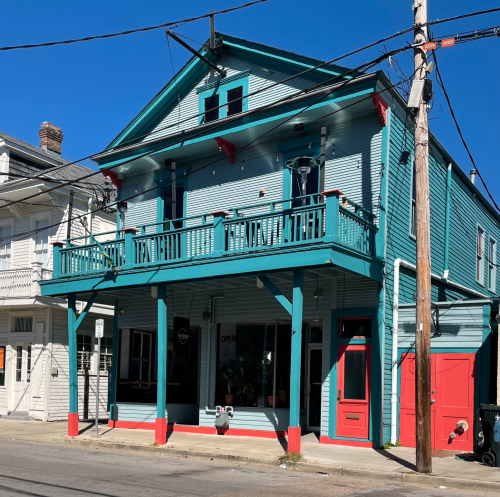 14 Parishes
14 Parishes
8227 Oak St.
After operating a successful stand in the Pythian Market since 2018, husband-and-wife duo Charles and Lauren Blake expanded to a larger second location on Oak Street in April 2021.
The space was formerly home to Mellow Mushroom, which closed in early 2020. Sanborn Fire Insurance map records indicate the building was constructed in the early 20th century. The subtle Queen Anne-style building has a mostly symmetrical facade and ornate brackets beneath a front gable. A large gallery extends over the sidewalk, shading the outdoor seating in front of the restaurant. Today, the building’s exterior is accented with bright colors, and Jamaican flags fly high from the gallery on Oak Street.
Inside 14 Parishes’ new location, the first floor contains the main dining room and a bar dedicated to rum cocktails, as well as a dedicated takeout area with a separate entrance. The second story has another bar, a lounge and two balconies — a flexible space that can cater to events and parties, according to an article on NOLA.com|The Times-Picayune.
Chef Charles Blake is from Jamaica, and the traditional dishes on the menu reflect the island’s comfort foods. Staples like jerk chicken, oxtail, curry chicken, Jamaican patties, fry bread and whole red snapper are a few of the menu highlights, which pair with rum-based cocktails like mojitos and rum punches.
Advertisement
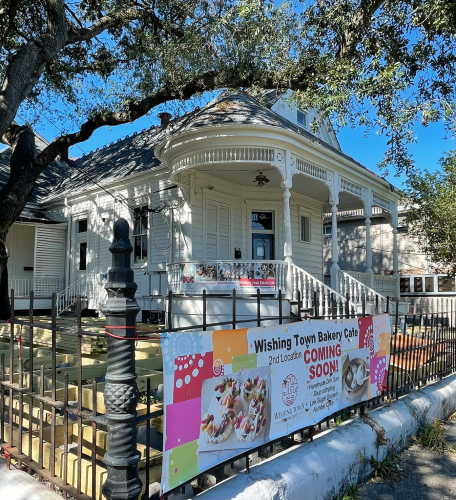 Wishing Town Bakery Café (Coming soon)
Wishing Town Bakery Café (Coming soon)
802 Nashville Ave.
Vivi and Kevin Zheng have a devoted following for their eatery on Severn Avenue in Metairie, which features a unique mix of savory dim sum dishes and sweet baked treats. Lovers of dumplings and desserts in New Orleans can soon celebrate the opening of the shop’s second location at the corner of Magazine Street and Nashville Avenue.
The building was formerly home to Café Luna, which closed during the pandemic after three decades at the location. The Eastlake-style cottage was originally built as a residence for river pilot George Wilson at the turn of the 20th century. Its porch overlooking Nashville Avenue has a distinctive curved bay and is adorned with ornate Eastlake-style millwork. The Zhengs hope to open up shop in the historic house later this year after renovations are completed, according to an article on NOLA.com|The Times-Picayune.
Vivi and Kevin Zheng hail from Guangzhou, China, and Wishing Town’s menu blends traditional Chinese dim sum and baked goods with modern and local twists. Steamed bao and dumplings range from classics — like steamed pork buns and soup dumplings — to new creations like cheeseburger pocket dumplings. A variety of noodle soups and hot pots are also on the menu. Baked goods include Hong Kong-style egg tarts and coconut tarts, egg yolk puff pastries and macarons, as well as visually stunning cakes by the slice or as a whole.
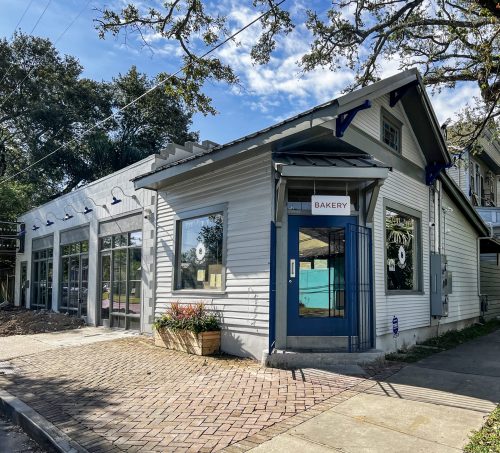 Leo’s Bread
Leo’s Bread
2438 Bell St.
In what was once a sheet metal fabrication shop, the sights and smells of freshly baked bread now waft from the garage doors at Leo’s Bread and out onto Bell Street, adjacent to Bayou Road.
The building in the Esplanade Ridge Historic District has a unique two-fold layout. Half of the building, formerly an office and now the dining room, is a jewel box of an early-20th-century corner store building. Its Craftsman-style details include a multicolored art glass window in the gable and knee brace supports at the roofline. Attached is a large concrete block garage which now houses all of the kitchen equipment used to bake fresh bread. The former garage door openings now have large glass windows and doors, inviting curious onlookers outside to watch the baking process.
Q&A with Kate Heller, Owner, Leo’s Bread
When did you open Leo’s Bread?
The brick and mortar opened on May 1, 2021, and before that, I was renting space in a commissary and doing farmers markets. Before that, I co-owned Echo’s with the 1000 Figs folks, but I had Leo’s throughout that and still baked for the markets. We decided to sell the restaurant, and throughout COVID, I just did markets and home deliveries, and found this space right before the pandemic began. I stalled for a second and then decided to go for it, renovated it, and opened in May.
What inspired you to open a new business despite the challenges of the pandemic?
When the pandemic began, I got very busy with baking. We offered home deliveries. It was the busiest Leo’s had ever been, and then throughout the year, the demand was greater than what I could produce. I was at a point where I thought, “I’ve got to go for it,” because the commissary I was working out of – I couldn’t physically bake enough there.
Your bakery is in a unique building with half of a craftsman-style corner store and half of a former garage. Tell us a little bit about its history and its renovation.
It’s awesome! It was an auto garage and a sheet metal fabrication shop. My landlord got the building a few years ago and really took his time to find tenants that would fit well in the space and took a lot of care. I had my own architect (Myles Martin of M3 Design Group) and used him for the build out, but he cared so much about this space, and that’s pretty evident.
The space is cool. It was an auto garage, and we took the big garage doors out and put floor-to-ceiling windows in so you could see into the kitchen and see people baking. The space was a little weird before. The part where you walk in the corner entrance used to be raised, and that was the office, and the floor was a couple different levels with a wall in the middle of it, so it was two rooms. We took the wall out and leveled the floor. It still has that warehouse and industrial feel, which I like, because to me baking is like a little factory. So we have our mini factory in the garage part, and then where the office was, we have our dining room. We kept the ceilings high and cut two windows in the sides so there’s a little more light inside.
It’s awesome that the garage doors were here. I actually had all my equipment shipped before the doors were taken out, and then the garage doors came out, and we put the glass in. So the garage was really good for me as a baker, because the oven is huge, the mixers are huge, and the fridges are huge. It made it a lot easier.
What are your favorite things about the building and the neighborhood?
I really wanted to be in the neighborhood. I started selling my bread here in front of Pagoda Café when I first got to town, and I live in the neighborhood. I looked at probably 20 spaces before choosing this one. I was going Uptown and to St. Claude, and I’d look at places and think, “I don’t know anyone here in this neighborhood,” so I really did want to be closer to home where everyone I know is. It’s so much work to be in this industry, you really have to like what you do, and part of that for me is seeing people that are familiar. So, it was cool that we found this spot.
In terms of the spot itself, I really love the light. A lot of times kitchens are hidden in the dark in the back. I think baking is a very cool process, and where the garage door is with floor-to-ceiling windows, you can look in and see everything. The table where you shape is right in front of the window where you mix, and if you look straight back, you can look straight into where the oven is. Bakers are baking at 4 or 5 in the morning, so not a lot of people are probably looking in, but if you ever did want to you could see everything happening, which I think is very, very cool.
What’s on the menu at Leo’s Bread?
The three things we focus on baking are loaves of bread, bagels and croissants. We also have a simple menu of breakfast and lunch sandwiches, both on bagels and bread. We have croissants in four different flavors, and have coffee and juice. So we’re a breakfast and lunch spot, and we focus most of our attention on the baking.
How can people support local businesses like yours while we recover from the pandemic and hurricanes?
If there are places you like, go to them! Don’t take anything for granted. Now is the time to support local businesses just to ensure they stay, because things are rough. When a storm hits, for small businesses, it’s a huge hit — two weeks of not making money and losing ingredients. It’s important if there are places you like, and you can afford to support them, you should, because this is when people really need it. Small businesses are great, and New Orleans is full of really cool businesses.
Leo’s Bread is open Wednesday to Sunday from 8 a.m. to 2 p.m. Items from the bakery can also be found at the Tuesday Uptown Crescent City Farmers Market and the Thursday Crescent City Farmers Market on the Lafitte Greenway.
Davis “Dee” Allen is PRC’s Communications Associate and a staff writer for Preservation in Print.
Advertisements

